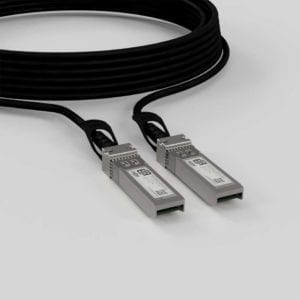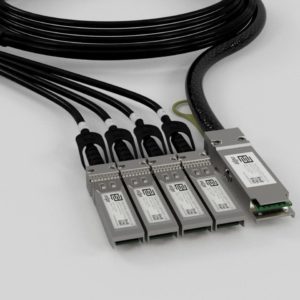Industrial-Temperature Optical Transceivers: What Matters and Why
Temperature specifications
In environments where precision and reliability are critical, understanding the operational temperature range of components is fundamental. Unlike standard-grade sensors, industrial temperature transceivers are engineered to withstand extreme conditions. So incase your network ever leaves the comfort of a climate controlled rack Industrial temperature modules are built for these moments : cabinets that baked in the sun all day, cabinets that freeze at night, vehicles that shake, site that are expensive and hard to visit, and the list can go on.
So when choosing a transceiver that would be best suited for your needs, it is best to check which temperature range would be best. There are two types of temperature ranges – operating temperatures and storage temperatures. The storage temperatures are a industry standard, whilst the operating temperatures have three range options.
| SKU | Temperature range type | Storage Temp |
|---|---|---|
| 25G-SFP28-10 | Commercial Temperature - 0°C to 70°C | -40C to +70C |
| 25G-SFP28-10I | Industrial Temperatures - -40°C to 85°C | -40C to +70C |
Applications requiring industrial ratings.
Industrial grade components are essential in environments where standard grade electronics simply can’t survive. From rugged terrains to vibration heavy operations, these applications demand transceivers and systems built to endure harsh conditions without compromising performance.
Outdoor Cabinets & Cell Towers:
Located in unprotected outdoor areas, these systems face daily exposure to temperature extremes, moisture, dust, and UV radiation. Industrial grade transceivers ensure stable communication and data integrity regardless of weather conditions.
Manufacturing Floor Deployments:
On production lines, machinery generates constant electrical noise and mechanical vibrations. Components must meet stringent industrial ratings to prevent signal degradation and ensure reliable operation during non-stop processing.
Transportation (Rail, Automotive):
Vehicles experience dynamic environments with rapid temperature changes, shock, and electromagnetic interference. Industrial grade transceivers support stable connectivity and data transmission in onboard systems and signaling infrastructure.
Military and Aerospace:
A variety of systems in defense and aerospace must operate flawlessly under the most severe environmental stressors—from high-altitude temperature swings to battlefield vibrations. Industrial ratings ensure these systems are tough enough to perform when failure isn’t an option.
By applying robust design standards and testing protocols, industrial temperature technologies offer unmatched resilience, helping sectors maintain uptime, data fidelity, and compliance in unpredictable and unforgiving environments.
Available models and limitations
SFP (Small Form-factor Pluggable) modules remain the most broadly available option for industrial applications. These transceivers support data rates up to 2.67 Gbps and are widely adopted due to their reliability, low power consumption, and compatibility with a vast array of networking equipment. However, they have their own set of limitations:
- Case vs. ambient temperature.
Datasheets usually quote operating case temperature. In fanless/outdoor enclosures, module case can run hotter than air—thermal budget matters. (Many 1G LX sheets explicitly say “Operating Case Temperature”.) - Power & heat.
1G fiber SFPs are ~0.8–1.0 W or for RJ-45 SFPs ~1.05–1.2 W. In sealed cabinets those watts add up; derate density or add airflow.
SFP+ modules, which support 10 Gbps, offer a middle ground between legacy compatibility and modern performance. While not as universally available in industrial-grade variants as standard SFPs, several manufacturers do provide ruggedized SFP+ models capable of operating in extended temperature ranges.
- Extended temperature
These modules are increasingly used in edge environments where higher throughput is necessary but where space and power constraints still apply. The main limitation lies in the relatively narrow selection of industrial-compliant models, which can complicate sourcing and integration. - Power/heat headroom.
Just like with the SFP form factor heat is important. Optical SFP+ SR parts are typically ≲1.3 W; LR/ER can run higher. 10GBASE-T (RJ-45) SFP+ draws up to ~2.5 W, adding notable thermal load—be careful with high port density in sealed cabinets.
QSFP+ modules, designed for 40 Gbps transmission, are less common in industrial settings. Their availability is largely confined to commercial-grade environments, with only a few vendors offering ruggedized versions. The high data rate and port density of QSFP+ make them attractive for aggregation points or compact high-performance nodes, but their thermal output and sensitivity to environmental conditions limit their deployment in uncontrolled edge environments.
- Temperature options are tighter.
The vast majority of QSFP+ SR4/LR4 modules are 0–70 °C case. Some “lite” or telco variants are even narrower (e.g., +10…+60 °C). Industrial / extended SKUs do exist (–20…85 °C or –40…85 °C) but are niche and often special-order
For applications requiring speeds of 100 Gbps and beyond, such as those using QSFP28, OSFP, or CFP2 modules, the options are almost exclusively commercial. These transceivers are engineered for data center environments with controlled cooling and power infrastructure. There are of course exceptions to the following units.
- SR4 (MMF, 100 m) — Coherent’s FTLC9555REPM3 is specified 0 to 85 °C case.
- LR4 (10 km) — Coherent’s FTLC1154RDPL4 is explicitly rated –40 to 85 °C for outside-plant use.
- CWDM4 (2 km) — Coherent’s FTLC1155RGPL4 is offered as an industrial-temp part through authorized channels.
But like mentioned previously the options are limited. So If you need 100G at the edge or outdoors, plan around QSFP28 with –40 to 85 °C options in LR4, CWDM4, and single-lambda DR/FR, they exist, but expect higher power, tighter availability, and longer lead times.
Price considerations
Industrial-temperature optics almost always carry a premium over their commercial-temperature counterparts, typically by tens of percent. You’re paying for tighter component screening, longer burn-in and environmental testing, and, in many cases for a calibrated diagnostics across a wider temperature span.
That premium grows with speed and reach, so a 100G LR4 or CWDM4 at –40 to 85 °C won’t price like a 10G SR. Availability also affects cost: many I-temp SKUs are built to order, which means longer lead times and fewer “grab-from-stock” options. If your deployment has hard dates, lock in demand early rather than chasing parts later.
Commercial terms can nudge the budget, too. Temperature-binned or project-coded modules may come with minimum order quantities and NCNR (non-cancelable, non-returnable) terms. If you need specific vendor coding or custom DOM/DDM thresholds, expect either a small per-unit adder or a one-time setup fee—harmless at scale, but worth noting when you price pilots. Finally, think beyond the sticker. Wider-temp modules often draw more power, and higher-speed parts add real thermal load; that can ripple into enclosure size, airflow, heatsinking, and power provisioning.
Plan a sensible spares strategy—typically 10–15% for remote sites—and store them within the stated storage temperature so they’re ready when you are. When you tally the whole picture, the economics usually favor rugged parts: one truck roll, a flapping link, or an SLA miss will erase the savings of a cheaper commercial-temp module in a single afternoon.
Summary:
Industrial-temperature transceivers are about keeping links honest when the environment won’t cooperate. Pick the right operating range (0–70 °C, –20–85 °C, or –40–85 °C) based on where the gear actually lives, and remember specs are usually for case temperature, not room air. At ≤2.67G, SFP options are plentiful; SFP+ has good coverage with attention to heat; QSFP+ is tighter; and 100G QSFP28 does have extended/industrial choices, but they’re niche and power-hungry. Ask vendors for real environmental test summaries and a clear compliance matrix (safety, EMC, laser). Finally, budget for the premium, lead times, and spares—the payoff is uptime, fewer site visits, and fewer surprises when the weather (or enclosure) runs to extremes.
 SFP-10G-CU3M
SFP-10G-CU3M
 Huawei QSFP-4SFP10G-CU1M
Huawei QSFP-4SFP10G-CU1M

